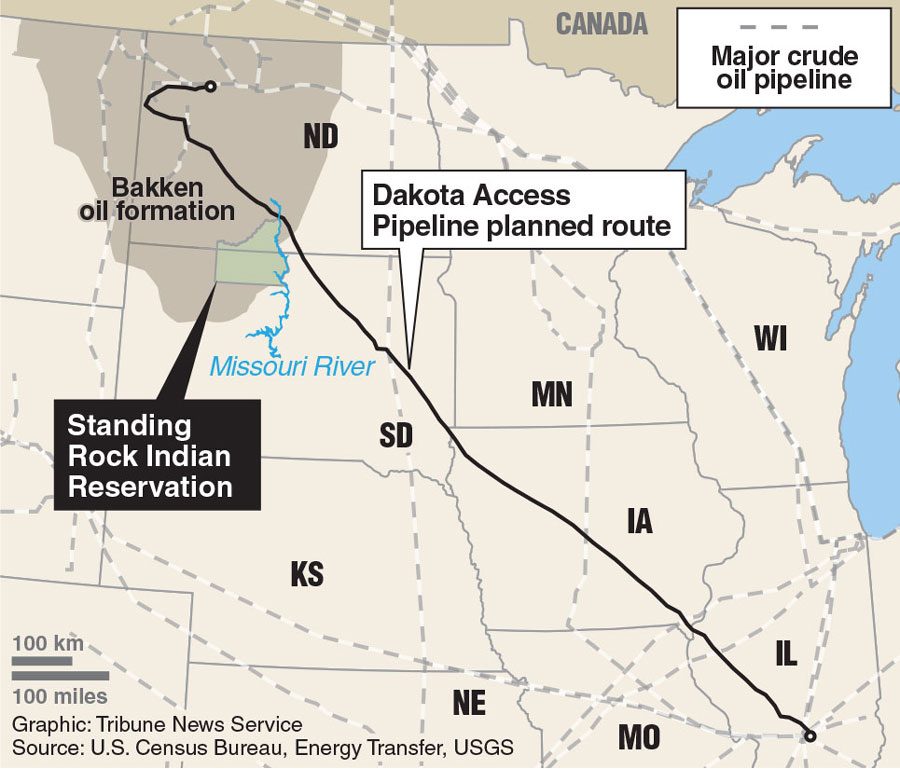North Dokta Pipeline reroute is a win for Native Americans
January 17, 2017
Native Americans living on the Missouri reservoir faced a victory on Sunday, Dec 4, when the North Dakota Pipeline reroute was announced. The pipeline, originally supposed to stretch through 4 states and under the Missouri River, is now being rerouted to avoid touching the precious land, and only water source, for the Standing Rock Sioux Tribe.
The North Dakota Access Pipeline (DAPL) was first announced in April, and immediately sparked controversy among thousands of Americans. Though the purpose is to ship great amounts of oil from North Dakota to Illinois, the route disrupts sacred grounds for multiple Native American tribes.
Energy Transfer Partners is the company behind the making of the pipeline. There is an estimated 7.4 billion barrels of oil of North Dakota, which would make overseas import unnecessary. The transportation would take less time, and be more energy and cost efficient. Business people believe the 3.7 billion dollar investment is worth it, but many protesters disagree. Among those who disagree is a student at Palatine High School who protested on Nov 12 in downtown Chicago.
“It’s all about greed and money.” Samantha Imlay, sophomore at Palatine High School, says. “We need to do what is clearly morally correct and uphold our duties to protect the environment and fellow man.”
The US Army Corps, after many months of nonstop protests, has finally agreed to reroute the pipeline, causing much relief for the Natives. However, there is still major worry that the decision will be revoked. In an interview with CNN, Jan Hasselman, the attorney for Earthjustice representing the Standing Rock Tribe in court, commented on the issue.
“If the incoming administration tries to undo this and jam the pipeline through despite the need for an analysis of alternatives.” Hasselman says, “we will certainly be prepared to challenge that in court.”
Although the reroute is a major victory for many Native American tribes, including the Sioux, the fact that it’s still being built poses an issue. Until the reroute is completely finalized, there is no telling what other land the Army Corps will tear apart. All that is certain right now is that until the Native Americans feel like they are safe, the ongoing demonstrations will not stop, and the Army Corps will face a very difficult time trying to build their pipeline.








